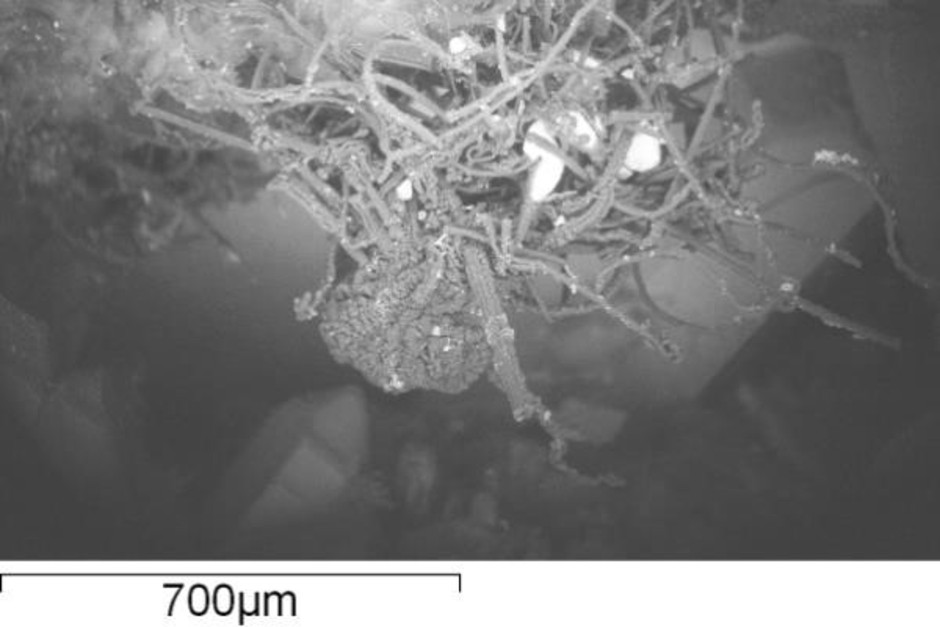Forskningsområden: Paleontologi
Forskningsämnen: Astrobiologi, Meteoritnedslag, Svampar
Project overview
Project period: 2021 - 2024
Participating departments from the museum: Palaeobiology
Impacts are usually described as catastrophic events with global effects and mass extinctions, as with the K/T boundary event. Life has been punctuated by impacts at several times during Earth's history, not least on the early Earth, when devastating impacts are believed to have sterilized the entire surface of the Earth.
In an astrobiological context, however, impacts have been suggested as events with substantial influence on the sustainability of a biosphere on a planetary body. This is due to the effects an impact may result in, such as extensive fracturing of the targeted bedrock and hydrothermal activity driven by heat from the impact melt which can potentially support a deep biosphere. These effects may be crucial for life on a planetary body that is otherwise uninhabitable.
Project description
In this project I investigate impact craters in Sweden, mainly at Lockne and Siljan, and study fossilized microorganisms preserved in paleo-hydrothermal mineralizations.
Funding
- Rymdstyrelsen (https://www.rymdstyrelsen.se)
- Carl Tryggers stiftelse (https://www.carltryggersstiftelse.se)
Selected publications
- Drake, H., Ivarsson, M., Heim, C., Snoeyenbos-West, O., Bengtson, S., Belivanova, V., Whitehouse, M. (2021) Fossilized anaerobic and possibly methanogenesis-fueling fungi identified deep within the Siljan impact structure. Communications Earth & Environment, DOI: 10.1038/s43247-021-00107-9.
- Drake, H., Roberts, N., Heim, C., Whitehouse, M., Siljeström, S., Kooijman, E., Broman, C., Ivarsson, M., Åström, M. (2019) Timing and origin of natural gas accumulation in the Siljan impact structure, Sweden. Nature Communications, 10:4736, doi.org/10.1038/s41467-019-12728-y.
- Tillberg, M., Ivarsson, M., Drake, H., Whitehouse, M., Kooijman, E., Schmitt M. (2019) Re-evaluating the age of deep biosphere fossils in the Lockne impact structure. Geosciences, 9, 202; doi:10.3390/geosciences9050202.
- Ivarsson, M., Broman, C., Sturkell, E., Ormö, J., Siljeström, S., van Zuilen, M., Bengtson, S. (2013) Fungal colonization of an Ordovician impact-induced hydrothermal system. Scientific Reports 3, 3487; DOI:10.1038/srep03487.
- Ivarsson, M. and Lindgren, P. (2010) The search for sustainable subsurface habitats on Mars, and the sampling of impact ejecta. Sustainability, 2, 1969-1990.
- Lindgren, P., Ivarsson, M., Neubeck, A., Broman, C., Henkel, H. and Holm, N.G. (2010) Putative fossil life in a hydrothermal system of the Dellen impact structure, Sweden. International Journal of Astrobiology, 9, 137-146.
- Sjöqvist, A.S.L., Lindgren, P., Sturkell, E.F.F., Hogmalm, K.J., Broman, C., Ivarsson, M., Lee, M.R. (2016) Shock metamorphism and hydrothermal alteration of mafic impact ejecta from the Lockne impact structure, Sweden. GFF, https://doi.org/10.1080/11035897.2016.122736
 External link.
External link.
Project members
Project manager


